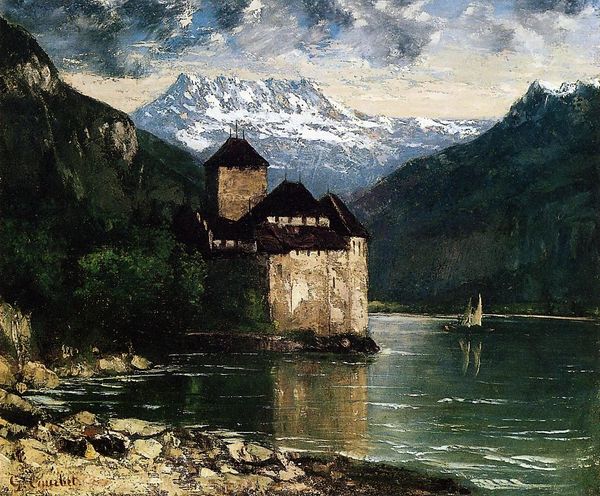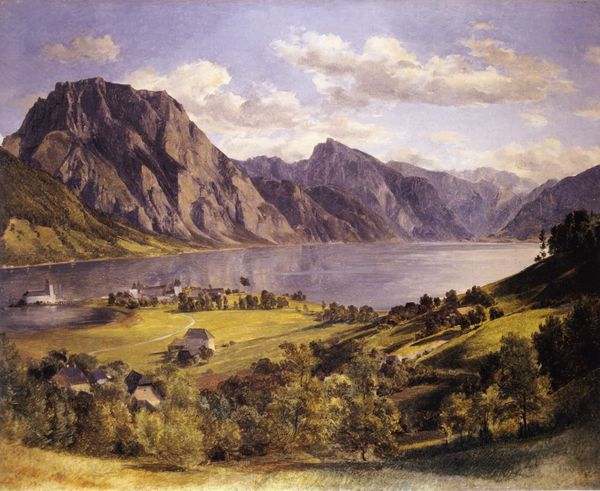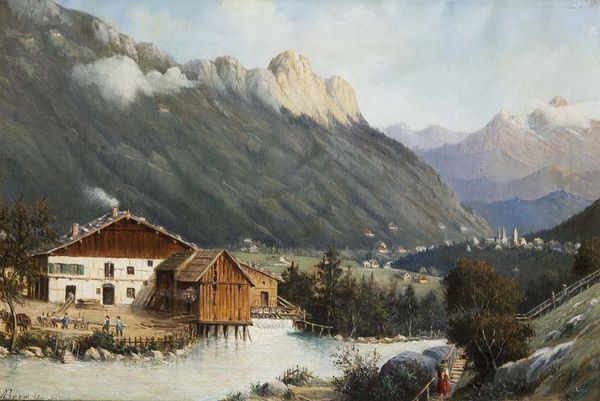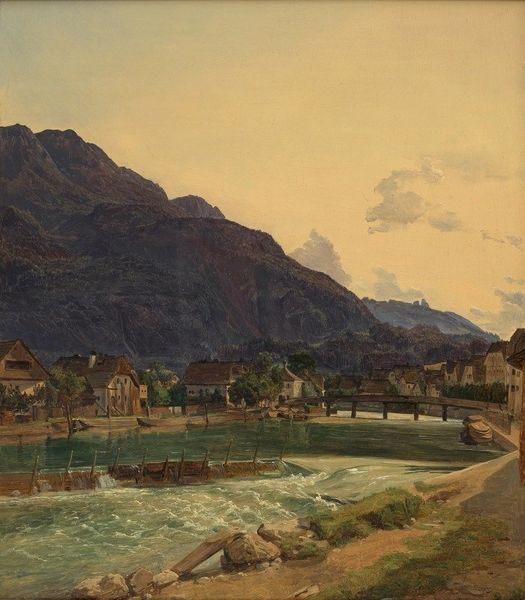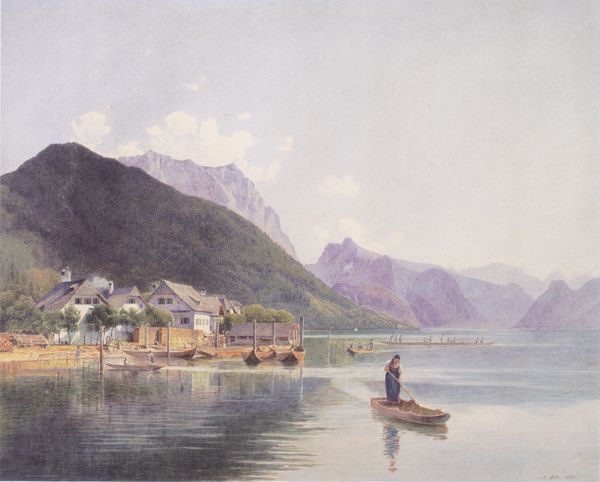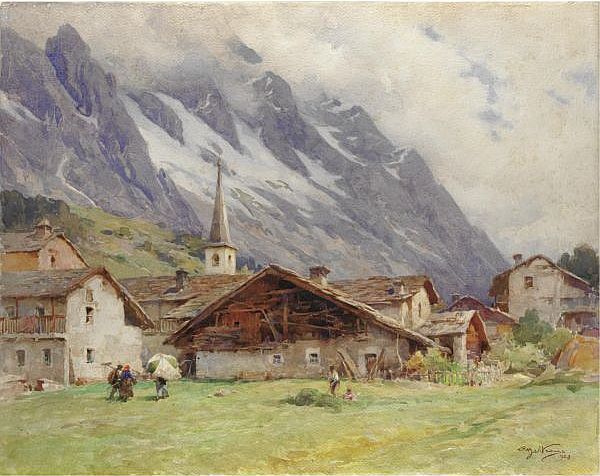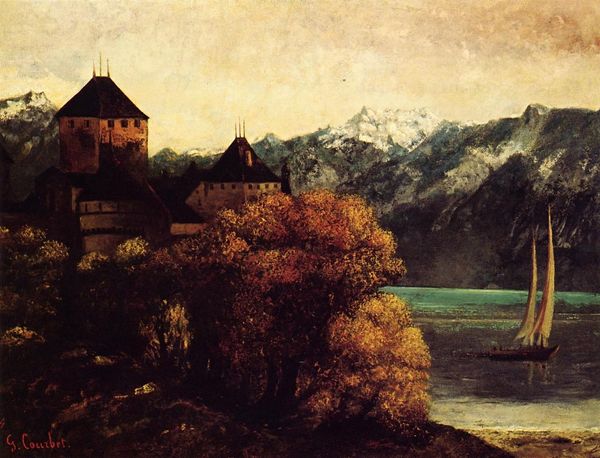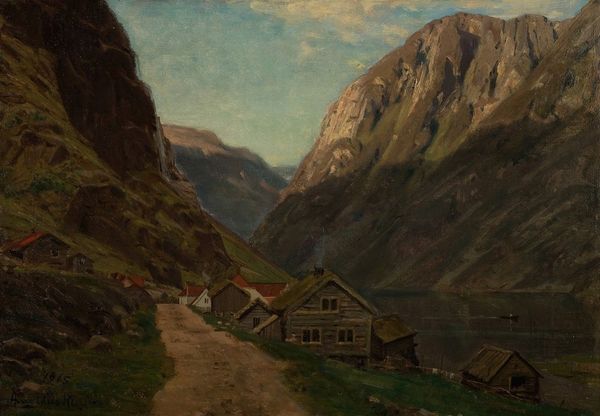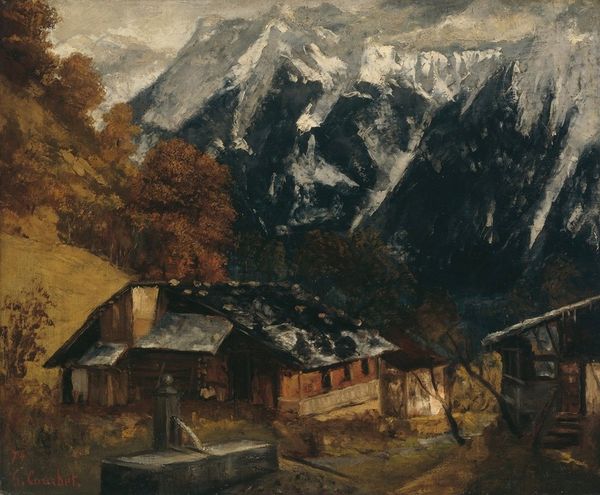
#
sky
#
abstract painting
#
impressionist painting style
#
landscape
#
impressionist landscape
#
possibly oil pastel
#
oil painting
#
fluid art
#
acrylic on canvas
#
mountain
#
seascape
#
natural-landscape
#
surrealist
#
watercolor
Dimensions: 45 x 88 cm
Copyright: Public domain
Curator: Ferdinand Georg Waldmüller painted this piece, titled "Hallstatt," in 1839. Look at the buildings nestled on the hillside. What’s your immediate response to it? Editor: A stillness. A palpable sense of quietude settles over me as I observe the tranquil scene, like time pausing on Hallstätter See. What drew Waldmüller to this specific viewpoint? Curator: Considering Hallstatt's location, the Habsburg empire's exploitation of the land for salt mining needs interrogation. Were those picturesque cottages not just charming, but homes of workers who fueled an empire? This romantic landscape is steeped in labor. Editor: You raise such crucial points. It strikes me that the mountains act as silent observers of history; in folklore, mountains often stand for endurance, and they embody that, while the placid lake reflects a fragile and fleeting present. I’m wondering about the color palette and its emotional effects? Curator: Notice the restrained, muted palette. Given Waldmüller's commitment to representational accuracy, one must ask if that stylistic choice obscures Hallstatt's socio-economic complexity. A brighter scene might provoke uncomfortable questions about resource distribution. Editor: Possibly. And yet, the softer colors also echo themes of serenity and the sublime, resonating with ideas of German Romanticism at the time. There's this desire to discover a divine element hidden in Nature's unspoiled beauty. I do see a visual dialogue here between Romantic ideals and burgeoning realism. Curator: Do you think so? I would counter that those romantic notions risk masking an ongoing power imbalance between human agency and its extraction from landscapes that sustained colonial empires? Are we glorifying, inadvertently, such systemic forces? Editor: It's difficult terrain, this balancing act between aesthetics and socio-political critique. By prompting reflection, doesn’t this view act as an enduring mirror of society’s own historical echoes and visual symbols? It challenges us even today. Curator: Your perspectives give rise to crucial dialogue; together, they force critical analysis and challenge complacency within the discipline of art history, promoting more equitable and nuanced ways of approaching cultural heritage. Thank you. Editor: A most revealing reflection indeed; thank you for guiding the discussion to new grounds.
Comments
No comments
Be the first to comment and join the conversation on the ultimate creative platform.
